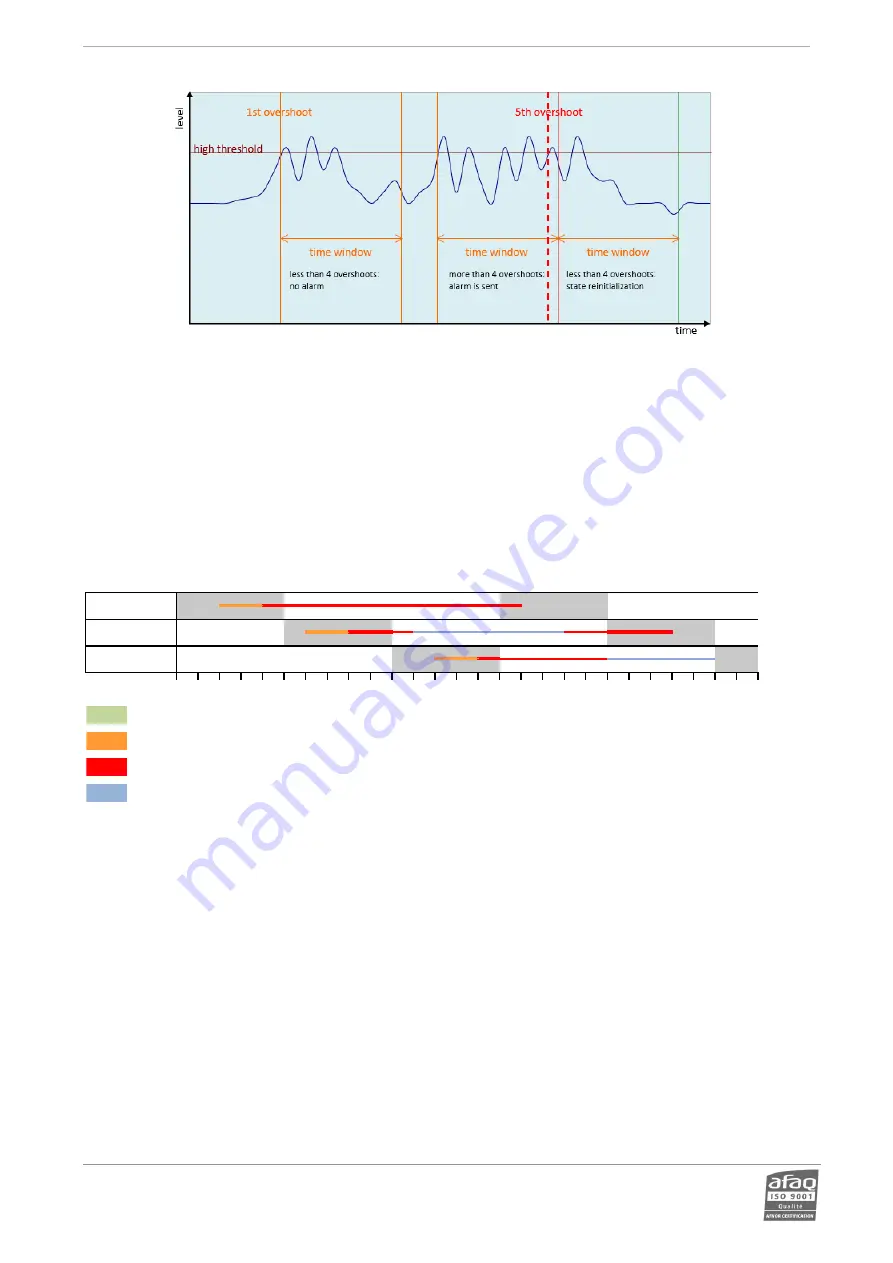
AUDEMAT FM Probe 1.2.x User Manual
–
07/2021
Page 18
WorldCast Systems SAS - 20, avenue Neil Armstrong
–
33700 Merignac
–
Bordeaux Métropole (France)
+33 (0)5 57 928 928
–
contact@worldcastsystems.com
–
www.worldcastsystems.com
Intermittent alarms with a maximum of 4 events within the set time window
Case of alarms ‘closed by hierarchy’
When an alarm with a high hierarchical level is triggered, the state for each lower hierarchical level alarm changes to
‘CLOSED’ and a notification for ‘closed by hierarchy’ is sent. As an example, if an AFLOW alarm
is active and the
RFLOW2 alarm gets triggered, an AFLOW trap is sent with an alarmStatus value of 3 (closed by hierarchy).
Inversely, when the high level alarm ends,
the lower level tests that were ‘CLOSED’
return to
‘ALARM’
status.
Multi-channel monitoring
1 2 3 4 5 6 7 8 9 10 11 12 13 14 15 16 17 18 19 20 21 22 23 24 25 26 27
time in
seconds
Channel 1
Channel 2
Channel 3
monitoring time
error before the alarm is triggered
alarm
no issue on the channel
When dealing with a series of channels, each channel is monitored for a set time (5 seconds on the example above,
with a 2 second delay before alarm).
Recorded start and end times depend in part on the monitoring cycle.
Channel 1: the error starts second 2 while the channel is monitored and ends second 16 while the channel is also
monitored. Alarm start and end times match actual times.
Channel 2: the error starts second 6 while the channel is monitored and ends second 11 when the channel is no longer
monitored. An error starts again second 18 and ends second 23. The monitoring unit cannot detect the absence of
error between second 11 and second 18. It is seen as a single error. Alarm start time: second 8; alarm end time second
23.
Channel 3: the error starts second 12 while the channel is monitored and ends second 20 when the channel is no
longer monitored. The monitoring unit detects the absence of error when starting to monitor the channel again.
Alarm start time: second 14; alarm end time: second 25.
It is also important to note that when a channel is not monitored, no measurements can be compiled on that specific
channel, leaving blanks in the recorded measurement curves.
As a rule, be aware that the higher the number of monitored channels, the lesser monitoring time is spent on each.















































